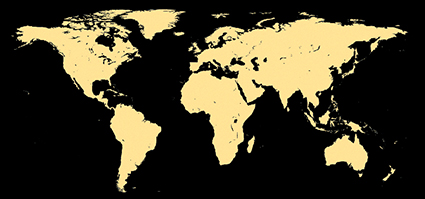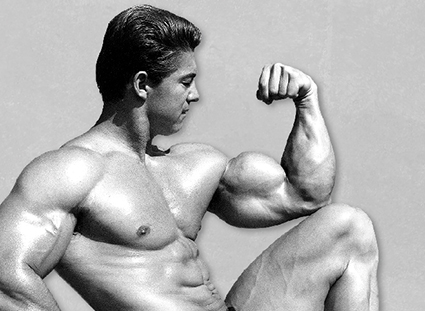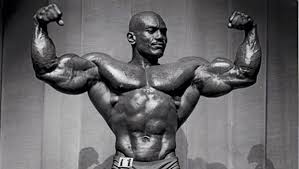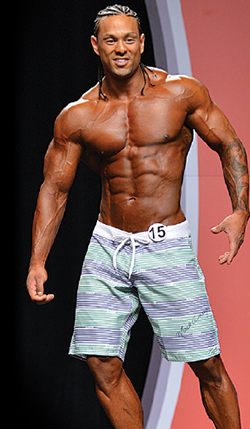OLYMPIA FACTS & TRIVIA

Olympia Contest Coverage Sponsored by BODYPRO Gym
You May Be Surprised About What You Don’t Know About the Greatest Bodybuilding Contest of All Time
Following the annual Mr. Olympia competition, we thought it would be fitting to break down the last half century plus of the Big O show. We present to you facts, figures, and folklore about the most prestigious show in the IFBB. Without further ado, here’s a just a small sample of the past, present, and even a little future of “the Super Bowl of Bodybuilding.”
THE OLYMPIA WAS NAMED AFTER A BEER!
The Olympia contest got its name from a beer! It was named after the Washington-based Olympia Brewing Company, which was the brand of beer that Larry Scott and Joe Weider were drinking when Joe was trying to convince Larry to enter his new, and as yet untitled, bodybuilding contest. The rest, as they say, is history.

AROUND THE WORLD
- The Olympia has been hosted in Las Vegas since 1999, but the first Mr. O was held at New York’s Brooklyn Academy of Music.
- Paris hosted the 1971 Mr. Olympia, which was the first time the O hadn’t been held in New York since its inception.
- In the United States east of the Mississippi River, the Mr. Olympia has been staged 10 times in New York City; six times in Columbus, Ohio; three times in Atlanta, Georgia; twice in Chicago, Illinois; and once in Orlando, Florida (it will be twice after the 2020 Olympia).
- In the United States west of the Mississippi River, the Mr. Olympia has been staged 20 times: twice in Los Angeles, and 18 times in Las Vegas.
- Internationally, the Mr. Olympia contest has been staged in Paris, France; Essen, Germany; Pretoria, South Africa; Sydney, Australia; London, England; Munich, Germany; Brussels, Belgium; Goteborg, Sweden; Rimini, Italy; and Helsinki, Finland.
- In over years of competition, one country reigns supreme. In terms of winners as at 2020 just one week out from the Olympia, it’s 34 Olympia wins for the U.S.A. versus 19 for the rest of the world.
OLYMPIA RECORDS
- The youngest Mr. Olympia competitor was Harold Pool in 1965, who was 21 years old. He was the only man to compete in the first three Mr. Olympia contests.
- The oldest Mr. O competitor was Albert Beckles in 1991. He was 53 years old.
- The youngest Olympia winner was 23-year-old Arnold Schwarzenegger in 1970.
- The most frequent Mr. Olympia competitors include Dexter Jackson with 18 contests (with the 2020 Olympia this will be his 19th time on the stage where he is set to retire), Ronnie Coleman with 15, Albert Beckles with 13, Shawn Ray with 13, and Samir Bannout with 11.

FACTS ON THE FIRST MR. OLYMPIA, LARRY SCOTT
- Larry Scott was the first man to win the Mr. Olympia competition in 1965. For his efforts, he pocketed $1,000 (a far cry from the $400,000 the modern day Mr. O winner gets) and a jewel-encrusted crown. He successfully defended his title at the 1966 Mr. Olympia contest before retiring from the sport at the tender age of 28.
- Of all the men to take the Mr. O title, only Larry Scott, won the Olympia on his first attempt. The other champions took two or more tries.
- Larry Scott is the only Mormon Mr. Olympia Winner.
 HISTORY OF THE SANDOW TROPHY
HISTORY OF THE SANDOW TROPHY
There is no doubt that the most prestigous prize in all of bodybuilding is the Sandow trophy. But what are the origins of this much-sought-after trophy?
Eugen Sandow was a famed bodybuilder/strongman of the late 1800s. In 1891 sculptor Fredrick Pomeroy captured Eugen’s likeness in a statue—a statue that would one day become known as the famed Sandow trophy.
In 1901, Sandow created “The Great Competition”—the first major contest that judged not only strength, but also physique. Copies of his statue were awarded as prizes.
It was not until 1950 that the Sandow showed up again, this time in the Mr. Universe contest. It was modeled after one of the statues from the original 1901 event. Steve Reeves won the coveted prize.
In 1977 the Sandow became the top prize for the Mr. Olympia. There is a rumour that Joe Weider’s wife saw the original mold for the Sandow at an antique shop and snapped it up. Good call. It would be Frank Zane became the first man to hold aloft the Sandow trophy in Olympia victory.
INTERESTING OLYMPIA STATS
- The first nine Mr. Olympias from 1965 to 1973 averaged only three competitors per contest.
- From 1980 to 1983, the Mr. Olympia averaged 16 competitors per contest.
- During the Lee Haney years (1984–1991), the Mr. Olympia averaged 20 to 21 competitors per contest.
- During the Dorian Yates years (1992–1997), the Mr. Olympia averaged 18 competitors per contest.
- From the Ronnie Coleman years to the most recent event (1998–2016), the Mr. Olympia averaged 20 competitors per contest.
- There have been 15 winners in 53 Mr. Olympias (as at 2020 one week out from the Olympia).
- Only three of the champions had non-consecutive victories: Arnold, Franco Columbu and Jay Cutler.
- Frank Zane was the lightest Mr. O with a contest weight of less than 190 pounds when he won all three of his Olympia titles.
- Of the 13 men who have planted their personal flag atop Mount Olympia, all but three have been repeat winners. The one-time champs are Chris Dickerson, Samir Bannout, and Dexter Jackson.

RONNIE COLEMAN
Ronnie Coleman remains one of the most popular Olympia champions of all time. In 2005 he tied Lee Haney as the winningest Mr. O competitors, each with eight victories. Ronnie also holds the record for: Heaviest winner: 296 lb., Biggest arms: 24", Biggest waist: 36", Biggest calves: 22"
OLYMPIA ODDS AND ENDS
 Chris Dickerson is the only openly gay Mr. O.
Chris Dickerson is the only openly gay Mr. O.- Latorya Watts was the first African American Figure Olympia winner in 2015.
- The majority of Mr. Olympia competitions have been staged in September. Only 16 times has it been held in October, and three times in November.
- MUSCLE INSIDER’s Scott Welch presented a cheque for $12,000 to Lee Priest for eighth place in 1999!
- Domenic Mauro, Ben Pakulski and Scott Welch all have their own Sandow Trophy (statue not the real thing) which they got from the late Robert Kennedy of MUSCLEMAG.
SHOW ME THE MONEY!
Mr. Olympia Prize Money History
1965–1974 = $1,000
1975 = $2,500
1976–1977 = $5,000
1978 = $15,000
1979–1983 = $25,000
1984–1985 = $50,000
1986–1987 = $55,000
1988–1989 = $60,000
1990–1995 = $100,000
1995–2003 = $110,000
2004 = $120,000
2005 = $150,000
2006–2008 = $155,000
2009–2011 = $200,000
2012–2013 = $250,000
2014 = $275,000
2015–2017 = $400,000
WHO HAS WON THE MOST PRIZE MONEY?
Currently tied for fourth on the all-time Olympia winner list, Phil Heath—with his 2017 Mr. Olympia win—he has tied Arnold with seven Mr. O wins. Unlike Arnold, Phil’s wins would all be back-to-back. But when it comes to prize money, Phil is numero uno. In his first six victories, Phil has won a staggering total of $2,175,000!

OLYMPIA WTF MOMENTS
On the eve of the 1997 Mr. Olympia, most felt the perennially on-form, reigning Arnold Classic champion Flex Wheeler would soundly defeat the past-his-prime five-time Olympia champ, Dorian Yates. That belief was quickly turned on its head 48 hours out from the big event, when the Sultan of Symmetry, with left forearm and hand bandaged, claimed he had been the victim of an unsuccessful carjacking at the hands of ninjas with nunchuks and guns! We're not even kidding...
 MR. OLYMPIA WINNERS BY THE NUMBERS
MR. OLYMPIA WINNERS BY THE NUMBERS
- Lee Haney, 8 wins,
- Ronnie Coleman, 8 wins
- Arnold Schwarzenegger, 7 wins
- Phil Heath, 7 wins
- Dorian Yates, 6 wins
- Jay Cutler, 4 wins
- Frank Zane, 3 wins
- Serge Oliva, 3 wins
- Franco Columbu, 2 wins
- Larry Scott, 2 wins
- Dexter Jackson, 1 win
- Samir Bannout, 1 win
- Dexter Jackson, 1 win
- Shawn "Flexatron" Rhoden, 1 win
- Brandon Curry, 1 win
 MS. OLYMPIA CHAMPS
MS. OLYMPIA CHAMPS
Lenda Murray, 8 wins
Corinna Everson, 6 wins
Kim Chizevsky, 4 wins
Rachel McLish, 2 wins
Juliette Bergmann, 1 win
Ritva Elomaa, 1 win
Carla Dunlap, 1 win
Yaxeni Oriquen, 1 win
 THE MOST CONTROVERSIAL OLYMPIA MOMENTS
THE MOST CONTROVERSIAL OLYMPIA MOMENTS
- Everyone thought that when Arnold came back in 1980, it was the most controversial Olympia. It got a lot of hype in the pop culture world because it was actually made into a movie called The Comeback: Total Rebuild. Arnold, while prepping and getting in shape for his first Conan movie, decided to throw his hat in the ring for that year’s O show. No one knew it was happening, and he definitely wasn’t at his best, but because it was such an epic return, he was awarded the title because well, let’s face it … he’s Arnold.
- The 1981 Olympia was even more controversial than the 1980 version. ‘81 was supposed to be the redemption for the “fix” of what happened in 1980, but it turned out to be even worse. This year was even more of a fiasco because Boyer Coe, Frank Zane, and Mike Mentzer all boycotted the Olympia due to what had happened the year prior. Some even say this year was the beginning of the end of Mentzer’s career in bodybuilding and what started his downward spiral into depression.

- After beating Arnold in his first Olympia attempt in 1969, Sergio Oliva missed his peak in ‘71 and was defeated by The Oak, setting up a monumental encounter between the two for the following year’s event. Unfortunately, the mythical Oliva was suspended from IFBB competition in ’71, which left the gate open for Arnold to win his second Olympia title. This helped build hype for their much-anticipated third Olympia battle in ’72.
OLYMPIA DIVISIONS
- In 1974 to 1979, the Mr. Olympia had two classes: over 200 and under 200. The average number of contestants during these years climbed to nine to 10 per contest.
- From 1994 to 2003 and again in 2012, a Masters Olympia was also crowned. In that first contest in 1994 Robbie Robinson took top honours with Chris Dickerson taking the 50+ title and Ed Corney winning the 60+ division.
- In 1980, the Ms. Olympia women’s bodybuilding competition debuted in Sydney, Australia, with Rachel McLish taking home the inaugural title.
 Thirty-five years later, in 2015, the division was dropped from the lineup. 2014 was the last year it was held.
Thirty-five years later, in 2015, the division was dropped from the lineup. 2014 was the last year it was held. - Iris Kyle is the most dominant female Ms. Olympia winner, with 10 wins in female bodybuilding under her belt—which is two more titles than either Ronnie Coleman or Lee Haney.
- The Fitness division premiered in 1995 in Atlanta, Georgia, and Mia Finnegan took top honours.
- The IFBB waited eight years until it introduced the Figure division in 2003. Davana Medina dominated, taking home the title three years in a row. Eventually, Nicole Wilkins would go on to win more titles than Davana.
- “Bikini” became a household term in 2010, with Sonia Gonzales being crowned champion that first year. To date, Ashley Kaltwasser is the only multiple bikini winner (2013–15).
 Both the Men’s and Women’s Olympia Physique divisions made their debut in 2013 with Canadian Mark Anthony Wingson and Dana Linn Bailey taking top honours in their respective divisions.
Both the Men’s and Women’s Olympia Physique divisions made their debut in 2013 with Canadian Mark Anthony Wingson and Dana Linn Bailey taking top honours in their respective divisions.- The first-ever Classic Physique division emerged at the 2016 Olympia with Danny Hester taking that top inaugural title.

- In 2008, the IFBB brought back the Lightweight division, but referred to it as the “202 Class.” Realizing the men needed/wanted more size, the IFBB changed the weight limit to 212 pounds in 2012. Flex Lewis is the only man to hold this title with seven consecutive wins.


